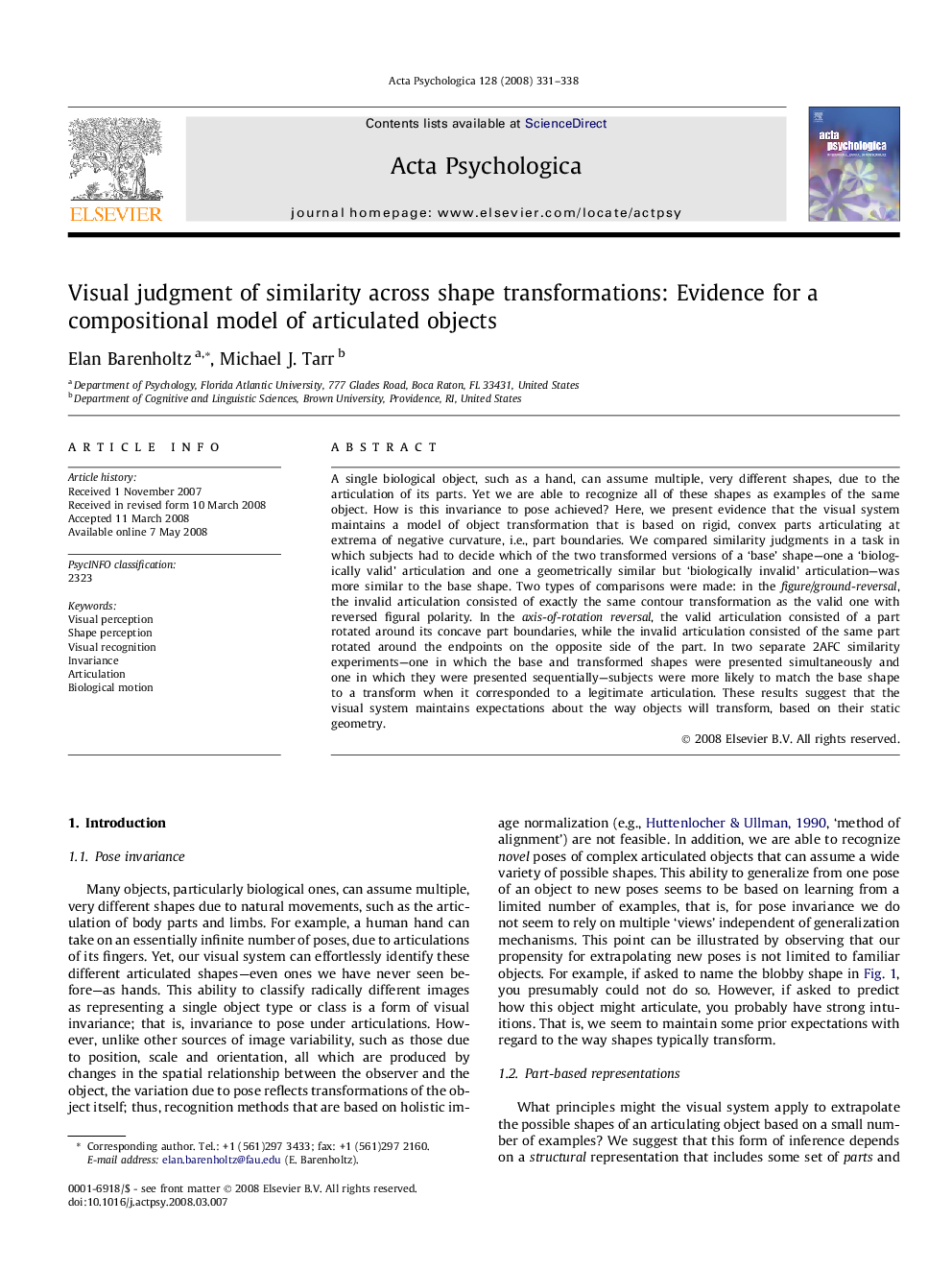| Article ID | Journal | Published Year | Pages | File Type |
|---|---|---|---|---|
| 920468 | Acta Psychologica | 2008 | 8 Pages |
A single biological object, such as a hand, can assume multiple, very different shapes, due to the articulation of its parts. Yet we are able to recognize all of these shapes as examples of the same object. How is this invariance to pose achieved? Here, we present evidence that the visual system maintains a model of object transformation that is based on rigid, convex parts articulating at extrema of negative curvature, i.e., part boundaries. We compared similarity judgments in a task in which subjects had to decide which of the two transformed versions of a ‘base’ shape—one a ‘biologically valid’ articulation and one a geometrically similar but ‘biologically invalid’ articulation—was more similar to the base shape. Two types of comparisons were made: in the figure/ground-reversal, the invalid articulation consisted of exactly the same contour transformation as the valid one with reversed figural polarity. In the axis-of-rotation reversal, the valid articulation consisted of a part rotated around its concave part boundaries, while the invalid articulation consisted of the same part rotated around the endpoints on the opposite side of the part. In two separate 2AFC similarity experiments—one in which the base and transformed shapes were presented simultaneously and one in which they were presented sequentially—subjects were more likely to match the base shape to a transform when it corresponded to a legitimate articulation. These results suggest that the visual system maintains expectations about the way objects will transform, based on their static geometry.
